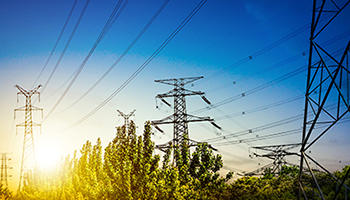Making Bills More Affordable
Seeking to provide bill relief for customers, while supporting California’s climate policies to adopt clean energy technology such as electric cars, SDG&E has submitted a proposal to state regulators to reform electricity pricing.

How customers are billed for electricity today is broken. Many voices, including consumer advocates, policymakers, academic researchers and environmental groups, have called for rate reform to make electricity more affordable and to support California’s clean energy transition. Under state climate policies, more of our lives – including the cars we drive and the homes and offices we work in – will be powered by electricity, rather than fossil fuels.
The electric rate structure needs to change with the times.
On April 7, 2023, SDG&E filed a rate reform proposal with the California Public Utilities Commission (CPUC), designed to lower bills for low-to-mid income households, while making bills more predictable and transparent for all customers. The proposal (also referred to as Predictable Power) was developed in response to a new state law (AB 205) that requires the CPUC to adopt a fixed price – based on household income – to help fund electric delivery infrastructure, such as poles, wires, meters, and customer service. SDG&E would not collect more money from customers under its reform proposal.
We have established a coalition called the Predictable Power Coalition to advance rate reform with the support of key stakeholders. No ratepayer dollars were used to fund the coalition. Learn more at predictablepower.org.
Upcoming Milestones
|
Date |
Milestone |
|---|---|
|
April 7, 2023 |
Proposals Submitted to CPUC |
|
Q2 2024 |
Fixed Price Final Decision |
|
TBD |
Implementation Schedule Pending CPUC Decision |
Do other utilities in California or in the rest of the country include a fixed price component in their electric pricing?

How will this proposal affect customers who get their electricity from community choice aggregators, rather than SDG&E?
How will this work?
It’s important to understand that SDG&E’s proposal is one of several fixed price proposals submitted to the CPUC for consideration. What changes will be adopted will ultimately be decided by the CPUC over the next year, following hearings, testimonies, and public input.
Per the framework laid out in a new state law (AB 205) passed in 2022, SDG&E has proposed adopting a fixed price – based on household income – to help fund electric delivery infrastructure and customer service. The fixed price would not change month-to-month regardless of how much electricity a customer uses.
Under this proposed approach, the average electric rate – the per kilowatt hour cost – that SDG&E customers pay would be 35% lower compared to today. The usage-based charges customers pay – mostly related to electricity purchased from natural gas, wind and solar plants – would continue to vary based on consumption levels and patterns.
The income thresholds shown below assume a four-person household and are based on federal poverty guidelines.
|
Income Bracket |
Household Income |
Income Based |
Estimated |
|---|---|---|---|
| Bracket 1* |
~$28k/year |
$24 |
~$0.31 |
| Bracket 2* | ~$69k/year |
$34 |
~$0.31 |
| Bracket 3 | ~$69k+/year | $73 | ~$0.31 |
*These brackets are for income-qualified customers who are already enrolled in the CARE and FERA bill discount programs. Under SDG&E’s proposal, these customers will continue to receive bill discounts.
**Income limits will vary depending on the number of people in each household.


Would SDG&E make more money as a result of the fixed price proposal?
SDG&E’s proposal would not result in the collection of more money from its residential customers overall, and the utility would not earn more profit as a result of the plan. The reform would simply change how SDG&E collects funds from customers for electric grid operations and maintenance and customer service, while providing greater equity and transparency.
How will SDG&E’s fixed price proposal benefit customers, if it’s approved?
- Lower electric bills: Low-to-moderate income families would get financial relief immediately, up to $180 in savings per year.
- Simplified, more transparent billing: Customers would see exactly what they are paying for. A fixed pricing component to help pay for infrastructure is used nationwide, including by local municipal water and sewer agencies.
- Price stability: Bills would become more predictable, making it easier for customers to manage their household budget.
- Advancing climate goals: The new rate structure would help make the clean energy future accessible to everyone. High electricity prices are a barrier for residents to make the transition to electric vehicles and other electric appliances.


Do other utilities in California or in the rest of the country include a fixed price component in their electric pricing?
A fixed pricing component to help pay for infrastructure is used throughout the U.S., including local municipal water and sewer agencies. California is one of the few states that does not include a required fixed pricing component in electric rates offered by its regulated utilities.
What else is SDG&E doing to improve energy affordability?
SDG&E has a multi-part strategy to reform electric rates and improve affordability. The other components of our strategy include:
- Pursuing federal funds to offset the costs of critical electric infrastructure
- Advocating for legislations (AB 982) to remove certain costs from electric rates to provide savings of up to 7%


How will this proposal affect customers who get their electricity from community choice aggregators, rather than SDG&E?
By the end of 2024, nearly 85% of customers in San Diego County will have their electricity purchased by local governments known as community choice aggregators (CCAs) or other entities called direct access providers – not SDG&E.
For these customers, the fixed price proposal only affects the SDG&E portion of the bill, which is related to grid operation and maintenance and customer service. Third-party electricity providers will continue to determine the electric generation charges.

In June 2022, the California State Legislature passed Assembly Bill 205 (AB 205), which directs the California Public Utilities Commission (CPUC) to adopt an income-based fixed price for residential electric customers by July 1, 2024, as a way to stabilize bills and fund electric delivery infrastructure.
This law specifically requires a fixed price to be adopted to lower average electric bills for low-income households and make it more affordable for consumers to drive electric vehicles and install electric home appliances, such as heat pumps. We believe a clean energy future should be accessible to everyone and not unfairly burden low-to-moderate income customers.
If adopted, SDG&E’s proposal would bring immediate financial relief to working families – annual savings of up to $300 – while also making transportation and home electrification more affordable for everyone. All customers will benefit from lower electric rates, greater bill predictability and increased transparency.
The fixed price approach would help ensure customers are not burdened with increased electricity costs, as they transition to zero-emission technologies, powered by clean electricity.
The overall impact of the fixed price proposal will vary by individual household incomes, energy consumption levels, and usage patterns. While high-income households will pay the highest fixed price, their electricity usage charges will be offset by a reduction in their electric rate. As households electrify, depending on usage, the total cost of household energy (gasoline, natural gas and electricity) could be reduced.
Ultimately, the CPUC will determine which entity and what methods will be used to validate individual household income. SDG&E is committed to customer privacy and is recommending that customers’ income data be managed by an agreed upon third-party, under the supervision of a state agency.
Low-income customers who currently receive bill discounts under the CARE and FERA program will continue to receive them. They could see additional savings under the fixed price proposal. AB 205 requires the CPUC to adopt a new electric rate that would result in lower average monthly electric bills for low-income customers.
If adopted, the fixed charge will apply to all residential customers, including solar customers. Solar customers will continue to save and pay lower bills than if they did not have solar. A strong supporter of rooftop solar, SDG&E leads in the nation in solar adoption, having interconnected more than 275,000 solar installations to the regional grid. We expect solar adoption to continue to grow in the region in the coming years, as California seeks to become carbon neutral by 2045.





